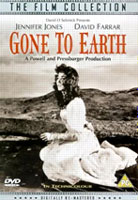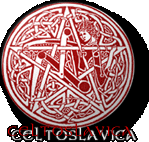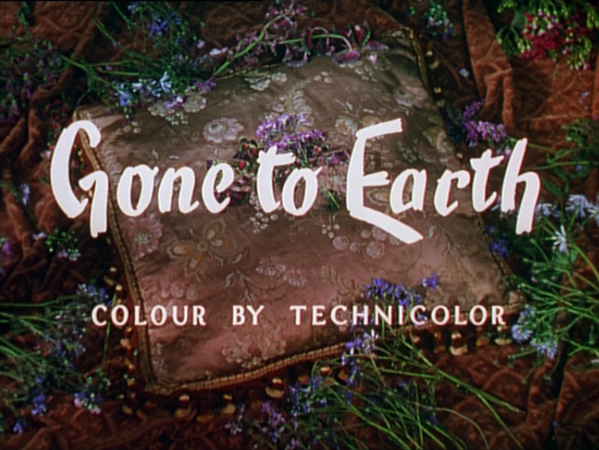
(aka The Wild Heart (USA) | Die schwarze Füchsin | La renarde)
by Michael Powell, Emeric Pressburger
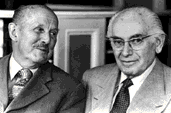
UK / USA 1950
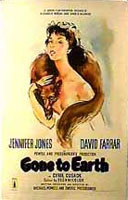
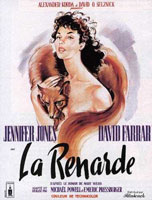
(click to enlarge)
|
Director:
|
Michael Powell, Emeric Pressburger | |
|
Producer:
|
Michael Powell, Emeric Pressburger | |
|
Executive Producer:
|
David O. Selznick | |
|
Production Companies:
|
London Film Productions / Selznick International Pictures / The Archers / Vanguard Films Production | |
|
Screenplay:
|
Michael Powell, Emeric Pressburger (based on the novel Gone to Earth by Mary Webb) | |
|
Cinematographer:
|
Christopher G. Challis, B.S.C. (Technicolor, 1.37:1); Freddie Francis (camera operator) |
|
|
Editor:
|
Reginald Mills | |
|
Music Score:
|
Brian Easdale | |
|
Production Designer:
|
Hein Heckroth | |
|
Art Director:
|
Arthur Lawson | |
|
Costume Design:
|
Ivy Baker, Julia Squire | |
|
Sound:
|
John Cox, Red Law, Charles Poulton | |
|
Cast:
|
Jennifer Jones (Hazel Woodus), David Farrar (Jack Reddin), Cyril Cusack (Edward Marston), Sybil Thorndike (Mrs. Marston), Esmond Knight (Abel Woodus), Edward Chapman (Mr. James), Hugh Griffith (Andrew Vessons), Beatrice Varley (Aunt Prowde), George Cole (Albert), Frances Clare (Amelia Comber), Valentine Dunn (Martha) | |
|
Runtime:
|
110 min / 82 min (cut US-Version: The Wild Heart) | |
|
Premiere:
|
6 November 1950 (UK) Budget: $1.5m; Filming Studio Location: British Lion Studios, Shepperton Studios (Shepperton, Surrey, UK); Outdoor Locations (all at the Welsh Border in Shropshire, UK: Much Wenlock; Longnor Hall, Shrewsbury (used as Squire Reddin's House); Eyton (The point to point racecourse); Pentre, New Invention (The Callow); Pontesbury; Pontesford Hill (Hunter's Spinney where Hazel has her assignation with Reddin); More Church; Snailbeach (God's Little Mountain and the Chapel); The Stiperstones (Devil's Chair where Hazel casts her spell) Gone to Earth was cut from 110 minutes for its American release, and several new scenes were added. Rouben Mamoulian directed the new footage while, as Challis recalls, 'tremendous arguments about the script caused a lot of reshooting — pretty well the whole of the end sequence and additional scenes too'. Selznick eventually discarded all but 35 minutes of Gone to Earth even eliminating some characters altogether until — with yet another new title, The Wild Heart and running at only 82 minutes — it was finally released in May 1952. This version differs from Gone to Earth by the addition of a spoken prologue (by Joseph Cotten) — a typical Selznick device — and a few non-essential plotlines, but loses much of the poetic imagery and mystical quality of Powell and Pressburger's version. Despite Selznick's efforts, The Wild Heart failed with US audiences although, perversely, this version was released in the UK on home video in 1980, with the original unavailable until the NFA's glorious new print was seen at the 1985 London Film Festival. |
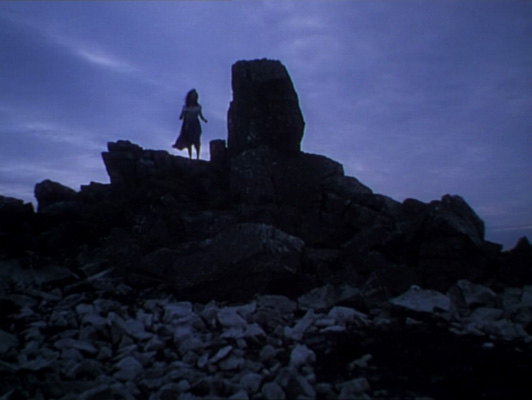
|
"... One of the great British regional films, and [it] marks one of the few occasions when we managed to break out of the studio and photograph the endlessly surprising, endlessly lovely British landscape in all its Technicolor strangeness. ... See the film again today and its melodramatic story soon recedes into the background. What ravishes the eyes and pierces the heart is an astonishing series of pastoral tableaux: the long shadows of birch trees as they lean into the wind against a sky of impossible blue; a bleak mountainside at twilight, its rocks sculpted into the semblance of contorted monsters; silvery trails of mist shrouding a desolate country house at dawn. Years later [DoP] Challis was proudly to claim that "the final result was, I think, one of the most beautiful films ever to be shot of the English countryside and in all its moods. Hours of patient waiting in rain, cold and sleet, for just the right angle of sunlight across a landscape, 5am calls day after day to catch the early morning mist: it was all so very worthwhile."
— Jonathan Coe, New Statesman: August 15, 1997 "... a visually spellbinding romance. Christopher Challis' photography evokes Shropshire and the Welsh borders so that you can smell the earth. Menace, the bloodlust of the chase (of the fox or the outcast sinner), is omnipresent as trees bend and wild creatures panic before an unseen primal force. ... the haunting dreamlike consistency recalls that other fairy story of innocence and menace, The Night of the Hunter." "The book resounds with elemental imagery through which states of mind and impending events are reflected in natural phenomena — not so much pantheism as Darwinian materialism, seeing physical drives rather than spiritual ideals as determining human life. Low-angled shots of black trees swaying ominously are accompanied by a soundtrack of hunting music, thudding hooves and chanting voices whose reverberations have almost physical impact, both evoking the Black Meet in Hazel's mind and creating a more general sense of dark, hostile forces threatening humankind. When the same soundtrack is heard over Reddin's relentless pursuit on horseback of Hazel, this is no facile symbolism. Hazel is attracted to what she fears most, as her reaction — a mixture of terror and exitement — shows; she is implicated in her own fate. The association of Reddin with the Black Huntsman, with the forces of death — manifested in his need to dominate, possess and control — is a reflection of his class as much as his masculinity. The film, like the novel, sees evil not as an abstract entity but as materially present in social institutions, in people's minds and hearts." "... une fable superbe, d'une grande légèreté et simplicité qui contrevient à la réputation de complexité du cinéma de Powell. Une célébration magique de la nature. Œuvre harmonieuse sur l'harmonie universelle, le film est audacieusement littéral ... Le film devient fascinant en décrivant un monde où la sensation, le pur instinct, les forces telluriques, le magnétisme animal dépassent la raison et la passion. ... Plus profond qu'il n'y parait, le film est directement en prise avec les éléments. Voir la scène d'une grande poésie où Hazel invoque les esprits de la montagne a propos de sa relation avec Jack Reddin, hobereau ténébreux, chasseur un peu diabolique qui la poursuit de ses assiduités. Suivant scrupuleusement les instructions du grimoire hérité de sa mère, Hazel contourne cérémonieusement un rocher où elle a déposé son châle, dans l'attente d'une musique divine qui sera le signe favorable : scène d'incantation païenne inédite dans le cinéma hollywoodien, qui rappelle presque certains trips de Kenneth Anger revus récemment. Mais au-delà de l'opposition entre christianisme et paganisme, le véritable enjeu est la lutte entre le principe masculin l'instinct sexuel du chasseur — et le principe féminin — la terre, à la fois gouffre et matrice de la nature. Powell suggère cela avec grâce. Reste la pincée de perversion qui pimente le film. Notamment quand Reddin espionne, un sourire concupiscent aux lèvres, la jeune fille qui essaie des robes de princesse dans son château. Le Powell du Voyeur pointe alors le bout de l'oreille... Mais guère plus, car ce drame magique est avant tout une poétique leçon de chose. |
|
|
||
|
Distribution:
|
P.T. Video Region 2 (UK) |
|
|
Runtime:
|
106:28 min (+ 4% PAL Speedup = 111 min) | |
|
Video:
|
1.33:1/4:3 FullScreen Average Bitrate: 4.77 mb/s PAL 720x576 25.00 f/s |
|
|
Audio:
|
English Dolby Digital 2.0 Mono | |
|
Subtitles:
|
None | |
|
Features:
|
• Behind-the-scenes footage (24:54 min) • Interview with Ian Christie, (Michael Powell's biographer) (10:56 min) • Biographies Jennifer Jones, Cyril Cusack, Michael Powell, Ian Christie • Film notes • Photo gallery |
|
|
|
DVD Release Date: 6 August 2001 Keep Case Chapters: 11 DVD Encoding: PAL Region 2 SS-DL/DVD-9 (5.94 GB) |
|
|
Comment:
|
This integral version of P&P's enchanting fairy tale, restored by the National Film Archive in 1985, is presented in all its Technicolor glory. Colours are simply breathtaking and very stable. The transfer, however, reveals compression artifacts in the blacks (see Frame 2), but is in general more than satisfying. Extras include a 25-min b/w informal "making-of" home movie by P&P
Film: **** out of ***** |
Menu

 |
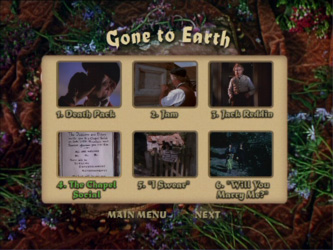 |
Frame 2
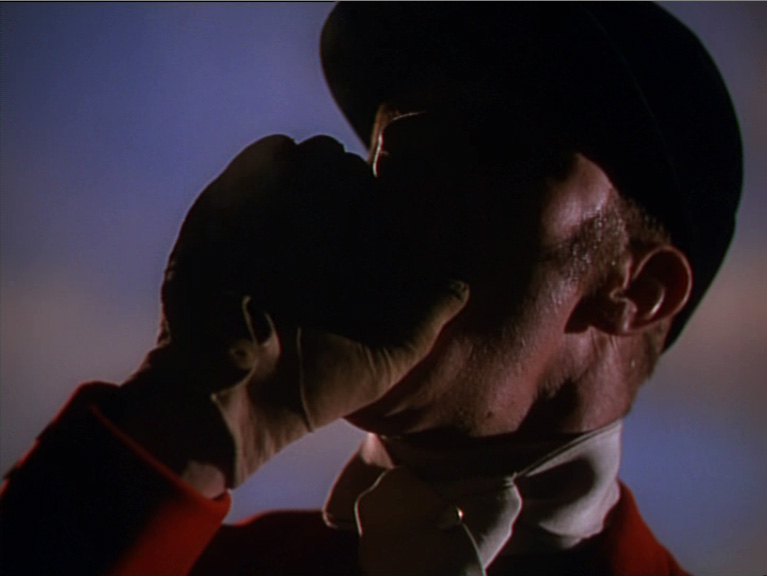 |
Frame 3
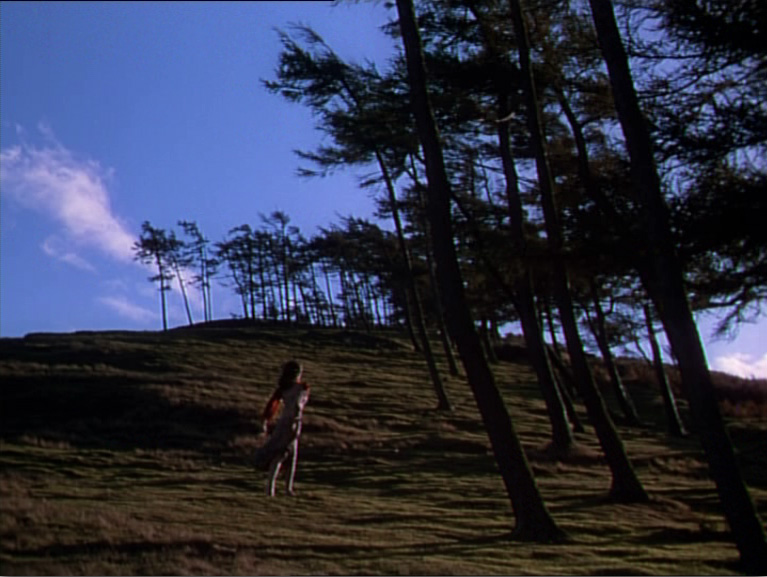 |
Frame 4
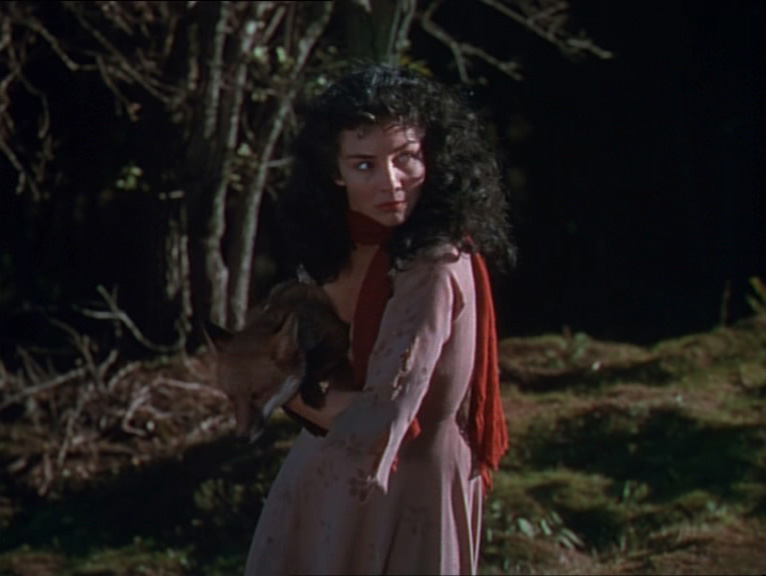 |
Frame 5
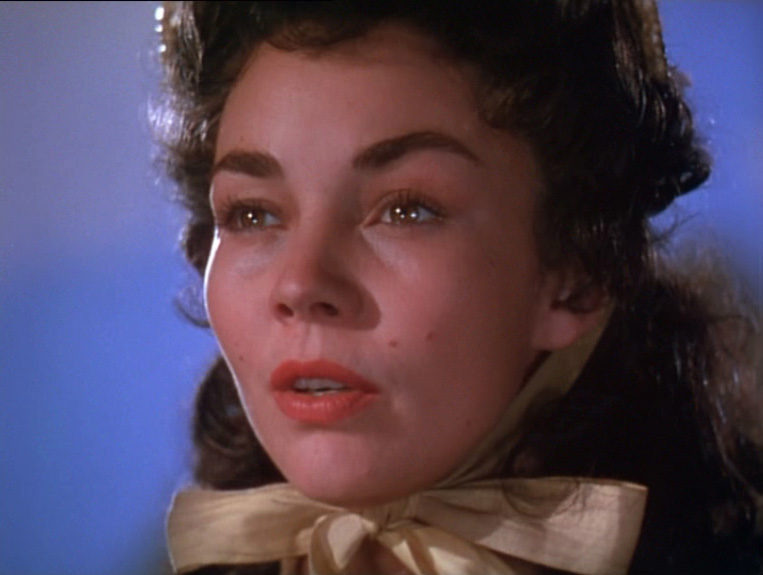 |
Frame 6
 |
Frame 7
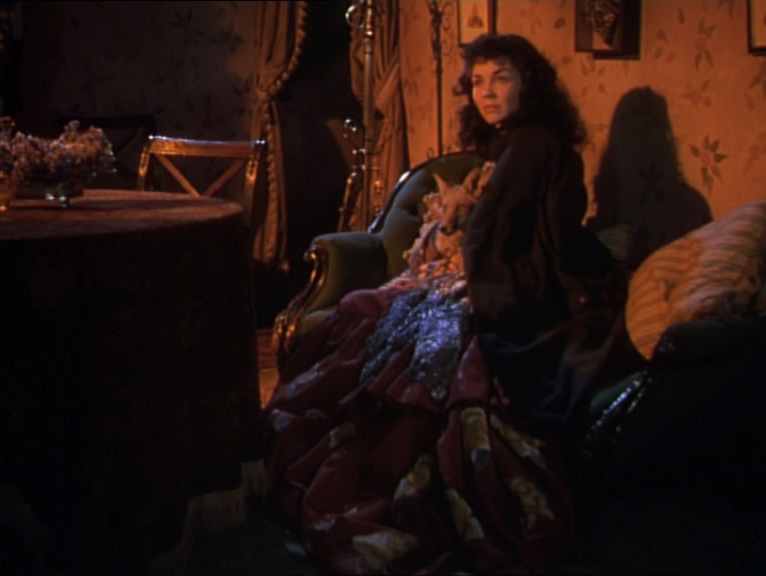 |
Average Bitrate :
4.77 mb/s
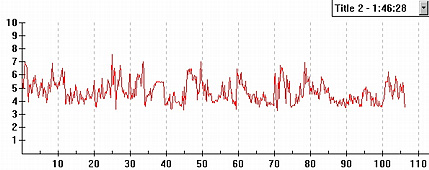
The Vertical axis represents the bits transferred per second. The Horizontal is the time in minutes
|
This is a strictly non-professional and non-commercial DVD review. Don't expect industry reference work! All ChiaroScuro captures are taken under MacOS X.2 using VideoLAN and Snapz ProX. For further methodological remarks see DVDBeaver (click on "Methodology"): "We are not a lab and are doing a good a job as our time and energy permits. Thank you for understanding." |
 dvdbeaver | chiaroscuro
dvdbeaver | chiaroscuro
